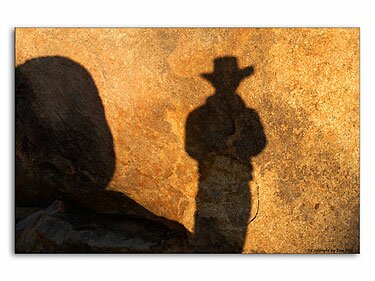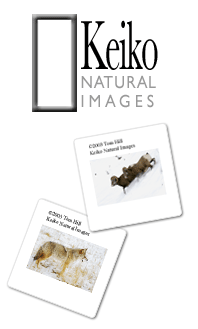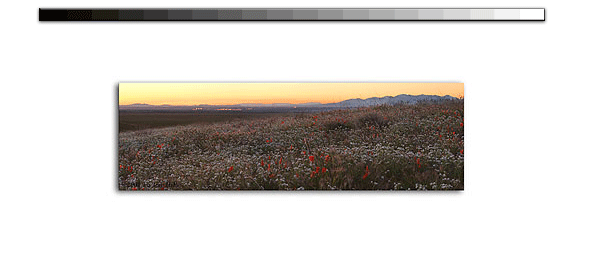|
|
|

|
|
|
Break through photography.
This image was made in the Alabama Hills behind Lone Pine California. The process leading up to its creation was kind of interesting. I hadnt envisioned it prior to actually seeing the shadow myself. I was just climbing around the boulders when it hit me like a bludgeon. Heres "the" image.
As a rule, I dont normally expect to make no more than one good picture a day when out in the field. A full days work, hundreds of images made, and only one worthy of being labeled good. If Ford Motor Co. was making one good car a day, theyd go out of business in no time. Fortunately, the metrics photographers live by are entirely different than other institutions. I suspect what photographers live by is much more aggressive than traditional artists. Throughput has to be the reason. Still, Im happy if I can call one image a day as good after a full days work. Its a successful day
Theres no planning where that image will be. Ive found distinctive images happen as much by happenstance as well as diligent planning. Pre-planning is no guarantee of success. These kinds of efforts may reduce the variables so success is slightly more predictable. But, students of lightphotographersare entirely at the mercy of an incredibly variable factorthe Sun. Most master photographers believe light quality is 90% of the battle with respect to making memorable images. Working with awesome light makes our jobs especially easier. Thats why theres a term "the magic hour". Its the time an hour before and after sunrise or sunset when the sun is particularly less harsh. Its when the clouds develop those purple and red tones. Its a time when conditions are changing so fast that one moment the light is memorable the next, its gone. The whole point to master photographers is if you find the right light success will follow. I think problem is this; what do you do with the light?
Finding the conjunction of great light with an interesting subject is the challenge in my book. Ive been known to run around searching for anything to photograph when the light looked awesome. Running around examining a subject for its qualities then jumping to the next hoping to find something that merits the light looks to the external observer a bit like a "fire drill"lots of energy being expended and not much being accomplished. As I said before, pre-planning can reduce the variables but it doesnt guarantee success. It only maximizes your chances.
Many times Ive planted my tripod at a spot scouted the day prior imagining the next morning. This kind of fantasizing drives the day prior scouting effort. Variables such as weather forecasts, predicted sunrise direction, relativeness of the compositional elements all guide the selection process. Once the spot is chosen and all the gear is set up, the work isnt done. The unanticipated variables began to take over. The circumstances a photographer has little control over begin to overcome the assessments made during his day prior scouting choices. This is when flexibility starts to become more important than anticipating the future. When best-laid plans are thrown away is when you see photographers doing the "fire drill" act. Thats where youll find me most of the time. Okay, maybe not most of the time but it sure feels like it. |
|
|
Next Page
|
|

|
|
|
|
|
|
|
|
|
|
 |




